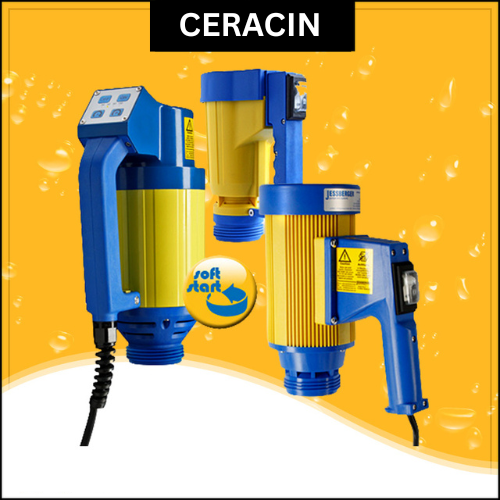Drum pumps are vital instruments in a variety of sectors, used to transport and dispense liquids from drums and barrels. They serve an important role in the efficient and safe handling of chemicals, oils, solvents, and other fluids. Proper maintenance is essential for keeping your barrel pump in good order and extending its lifespan. Neglecting maintenance can result in costly downtime, safety risks, and even environmental difficulties. In this article, we will go over the four most critical drum pump maintenance techniques to help you improve the performance and durability of your equipment.
What Drum Pumps Do?
Barrel pumps attach to the top of one container and extract the liquid. Most pumps are powered by electricity; however, manual pumps are also available on the market. While these pumps make it easier to transfer liquids from drums and IBCs, you must check that the drum pump's tube material is suitable for the liquid being pumped.
Best Drum Pumps for Pumping Different Media
Here are the many media you can pump using barrel pumps, as well as the materials they are compatible with.
Chemical Drum Pumps
Barrel pump sets using PP (polypropylene) tubes may pump acids, alkalis, and detergents up to 50 degrees Celsius. Chemical pumps with 316Ti stainless steel PP tubes are designed to pump neutral and non-combustible liquids. However, PP tubes with a driving shaft are designed to pump more aggressive material. Common media that may be pumped through PP tubes include fruit-based acids, liquid fertilizers, distilled water, formic acid (50%), and ammonia.
Oil Drum Pumps
These pumps with aluminum tubes are an excellent choice for pumping non-combustible, neutral liquids. Oil barrel pumps are primarily used to transport mineral oil products with a maximum viscosity of 1000 mPa. Diesel, hydraulic oils, engine oils, and motor oils are among the most often pumped media by oil drum pumps.
Maintenance Tips for Drum Pumps
1. Regular cleaning
Regular cleaning is one of the easiest yet most important maintenance jobs for drum pumps. Proper cleaning ensures that your pump remains contamination-free and functions efficiently. Follow these methods to effectively clean:
a. Flush the Pump: After each usage, flush the pump with a solvent or cleaning solution that is appropriate for the fluid being transferred. This helps to eliminate any residue or remains from the pump's components.
b. Disassemble the Pump: Periodically disassemble the pump to clean it thoroughly. This includes disassembling the pump's components. Refer to the manufacturer's instructions for disassembly and reassembly.
c. Check for Debris: While the pump is dismantled, check the inside for any debris, dirt, or particles that may have gathered. Clean up any foreign stuff carefully.
d. If used, Clean the Hose: Make sure to clean the hoses and fittings as well. Disconnect them from the pump and properly rinse to avoid clogging or contamination.
A regular cleaning program will help you avoid blockages, decrease the danger of contamination, and extend the life of your drum pump.
2. Preventive Maintenance
Set up a preventative maintenance strategy for your barrel pump to avoid unexpected breakdowns and expensive repairs. This includes:
a. Scheduled Inspections: Regularly examine your drum/barrel pump for signs of wear and damage.
b. Safety Checks: Ensure that all safety features are working properly. Safety should always be the primary consideration.
By proactively resolving possible faults, you may avoid costly downtime and guarantee that your barrel pump works properly.
3. Storage and handling
When not in use, properly store and handle your drum pump to ensure its longevity. Please follow these guidelines:
a. Keep your barrel pump in a dry, clean atmosphere to avoid corrosion and harm to sensitive components.
a. Protect from severe Temperatures: Do not expose your pump to severe temperatures, as this might affect seal performance.
b. Secure Properly: When not in use, secure the drum pump to avoid accidental damage or tipping.
d. Handle with Care: Train people on proper handling methods to reduce the likelihood of accidents.
e. Maintain Documentation: Keep a record of all maintenance tasks, such as cleaning and inspection. This documentation can be extremely useful for troubleshooting and tracing the pump's history.
4. Training & Education
Last but not least, ensure that your employees are properly taught and informed on the usage and maintenance of barrel pumps. A competent crew can detect and handle problems early, lowering the likelihood of costly repairs or accidents. Provide training for:
a. Safe Operation: Teach personnel how to safely operate the drum pump.
b. Maintenance methods: Provide training to maintenance professionals on proper cleaning and maintenance methods.
c. Troubleshooting: Train your staff to detect and resolve typical difficulties that may develop during pump operation.
d. Emergency Response: Ensure that your personnel are prepared to respond to emergencies, such as pump spills or leaks.
Conclusion
Drum pumps are intended to be a simple and safe means to move nearly any chemical from drums, barrels, or larger containers. Barrel pumps normally consist of a tube that is as long as the container's depth and fits through the container's top hole. Inside the tube is a vertical shaft with a motor on top and an impeller on the bottom. The pump moves the liquid from the barrel up the tube and out of a discharge outlet at the top.




.jpg)

Comments